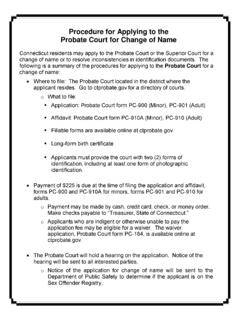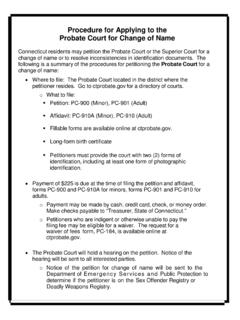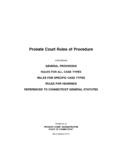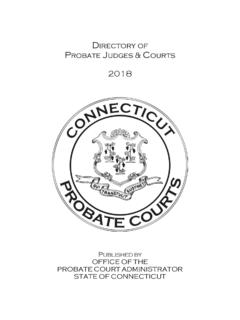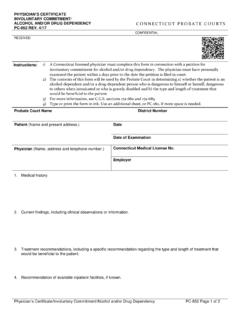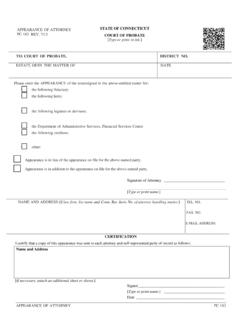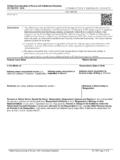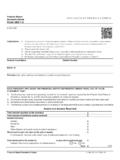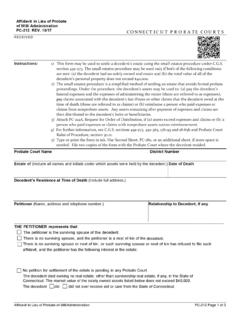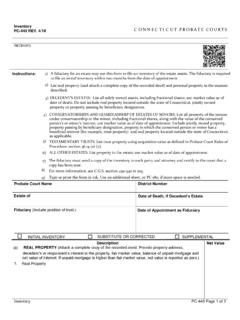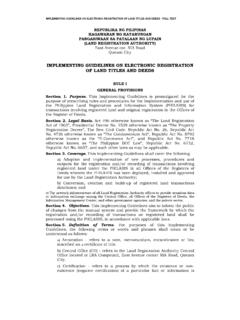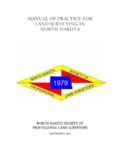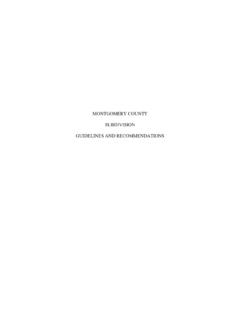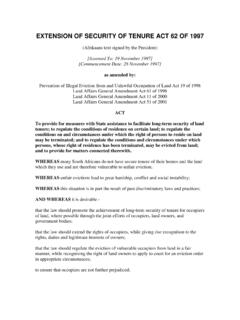Transcription of ADMINISTRATION OF DECEDENTS ESTATES - …
1 PROBATE court USER GUIDE ADMINISTRATION OF DECEDENTS ESTATES PUBLISHED BY OFFICE OF THE PROBATE court ADMINISTRATOR STATE OF CONNECTICUT COMPLIMENTS OF YOUR LOCAL PROBATE court ATTENTIONAll ESTATES Must File an Tax Return in the Probate An estate Tax Return must be filed within six (6) months of death. See Question 17 inside for more details. Probate fees are calculated on the value of the estate of a decedent , whether or not the estate is administered in a Probate court . See Question 18 for the fee schedule. Interest accrues on unpaid probate fees: 1)If a bill from a Probate court is not paid within 30days, or2)If an estate tax return is not filed w ithin six (6)months of the date of d Question 19 for more details. Please contact your local Probate court for more information.
2 Forms for Probate court matters are available online at Click on Forms. Forms are also available at the Probate Courts. 2018 Probate court Administrator, State of Connecticut 1 Introduction The ADMINISTRATION of DECEDENTS ESTATES is a legal process by which any outstanding financial obligations of a deceased person are paid, and the person s property is transferred to those entitled to receive it. In Part I, this booklet provides a brief outline of the estate ADMINISTRATION process. In Part II, this booklet answers some commonly asked questions. Additional information and forms can be found online at Neither this booklet nor the information contained on the website should be seen as a substitute for competent legal advice. 2 Glossary Administrator A person named by the Probate court to settle the estate of a decedent who dies without a will.
3 Beneficiary A person named in a will to receive a share of the decedent s estate . Codicil An amendment to a will. Conservator A person appointed by the Probate court to supervise the affairs of another person who is incapable of managing his or her affairs or caring for himself or herself. decedent A person who has died and whose estate is the subject of a probate proceeding. Domicile A person s primary and permanent place of residence. Executor A person named in a will to settle an estate . Fiduciary A general term for one who manages the property or arranges for the personal care of another. Examples include an executor, administrator, trustee, guardian and conservator. Guardian A person appointed by the P robate court to manage the property or care of a minor child or to arrange for the care of an adult with intellectual disability.
4 Heir A person entitled to receive a share of the estate if the decedent died without a will. Intestate The estate of a decedent who died without a will. Personal Property All property not classified as real property. Personal property includes bank accounts, shares of corporate stock, bonds, automobiles, household furnishings and personal effects. Probate Bond A guarantee by a third party insurance company to reimburse the estate for financial losses resulting from a fiduciary s breach of his or her duties. Real Property Land and buildings, including a condominium unit. Testate The estate of a decedent who died with a will. Trust An arrangement under which one party holds and manages assets for the benefit of another according to written instructions contained in a will or trust agreement.
5 3 Will A written declaration of a person s instructions for the distribution of his or her property after death, executed in accordance with specific legal procedures. 4 Part I: Steps to Administer an estate When a person who owns property dies, the Probate court becomes involved to oversee the division of property among the persons legally entitled to it. If the deceased person, referred to as the decedent , left a will, the division of property will be carried out according to the instructions in the will. (The process of proving that a will is valid is known as probating a will.) If the decedent did not leave a will, his or her property will be divided according to Connecticut s laws of intestacy. The c ourt will also ensure that any debts, funeral expenses, expenses of administering the estate and taxes are paid before approving the distribution of the remaining assets of the estate .
6 The following steps outline the major responsibilities of the fiduciary in settling a decedent 's estate . The outline is not intended to be all-inclusive and cover every situation. Fiduciaries of some ESTATES may have additional responsibilities, depending on individual circumstances. Step 1: File the will and Petition/ ADMINISTRATION or Probate of Will, PC-200, within 30 days of the decedent s death. A petition for ADMINISTRATION or probate of will should be submitted to the Probate court within 30 days of the decedent 's death. It should be accompanied by the original will and codicils, if any, and a certified copy of the death certificate. The petition must contain the names and addresses of all heirs (the decedent 's closest relatives) and beneficiaries (those parties who are named to receive assets under the will).
7 The petitioner must send copies of the petition and will to each person listed on the petition and certify that the copies were provided. The copies may be sent by mail, fax, e-mail or via hand delivery. A hearing on the petition may be held in Probate court . The hearing is an opportunity for family members and other interested parties to ask questions or state their positions. There are three options for the hearing: (1) The court may send notice to all parties informing them of the time and place of the hearing. (2) If all those entitled to notice file written waivers of their right to notice, and the court does not believe a hearing is necessary, then the court may enter a decree without a formal hearing and without the parties being present. (3) The court may follow the streamline notice procedure under which the court notifies all parties that they have the right to a hearing if requested by a specified date.
8 If a party requests a hearing, the court will send notice and hold a hearing. If no hearing is requested, the court may, without the presence of the parties, issue a decree on or after the decree entry date specified in the notice. The court formally appoints the executor named in the will when the will is admitted to probate. If the estate is intestate, the court appoints an administrator. 5 The court generally requires the executor or administrator to provide a probate bond and the court sets the amount. However, the court may dispense with the requirement of a bond if one of these conditions is met: (1) The will excuses bond. (2) The assets of the estate are less than $20,000, or the amount of the estate that is not restricted by Probate court order is less than $10,000. (3) All heirs or beneficiaries waive the requirement of a bond.
9 For more information related to Step 1, see Questions 4 through 10 and Question 13. Step 2: Take possession of the decedent s property. The first responsibility of the fiduciary is to gather the assets of the estate and place them under his or her control. For example, the fiduciary should transfer any bank accounts from the decedent 's name into an estate account. Stock certificates need not be registered in the name of the estate , although the transfer agents should be notified and instructed to send dividends in care of the fiduciary. Utility companies need to be notified of the decedent 's death, and accounts that will remain open should be transferred to the estate . Any dwellings, seasonal homes, etc. should be secured, protected from the elements and insured. The fiduciary must keep the estate 's income, assets and expenses completely separate from his or her own.
10 The fiduciary should use particular care in dealing with any firearms owned by the decedent . The sale or transfer of firearms is highly regulated and complex. See Question 15 in Part II for important guidance. For more information related to Step 2, see Question 14. Step 3: If the decedent owned real estate , file Notice for Land Records/Appointment of Fiduciary, PC-251, within two months of appointment as fiduciary. The fiduciary must file a Notice for Land Records/Appointment of Fiduciary form with the town clerk in each town in Connecticut where real estate owned by the decedent is located. The form is obtained from the court . Step 4: File Inventory, PC-440, within two months of appointment as fiduciary. The fiduciary must file an inventory of the estate with the Probate court within two months of appointment as fiduciary.
